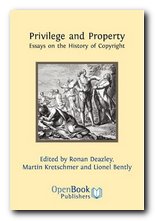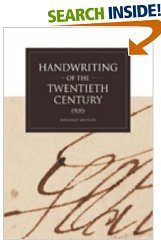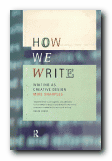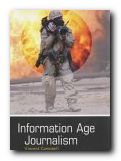scholarly study of the history of writing and technology
What is the relationship between writing and technology – including the means by which it is produced? Is there a difference between writing with a quill on velum, a pen on paper, or onto a hard disk using a word-processor. Naomi Baron certainly thinks there is, and she brings considerable erudition from what seems to be an Eng. Lit. background to explore the issues. She begins with a pithy analysis of twentieth century theories of the relationship between the spoken and the written language, then goes on to show how the text as an object evolved – from scroll to codex to printed book, and the effect that this had on both the process of production and consumption of the text.
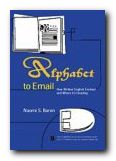 Taking the UK as her model, she traces the development of literacy in the UK from the eighth century, showing how literacy is linked to technology. She then discusses the development of the first writings in English up to the birth of print, pointing out that not all writers (including Shakespeare) embraced the technology of their time. Aristocrats writing in the early Renaissance thought it was vulgar to have one’s work printed and published. This leads into the history of notions of authorship – showing how plagiarism, quotation, and copyright are quite modern concepts. There’s lots of historical depth in her examination of the subject, and thought-provoking ideas emerge on almost every page. This is a serious, scholarly work, but readers eager for the email element promised in the title will have to be patient.
Taking the UK as her model, she traces the development of literacy in the UK from the eighth century, showing how literacy is linked to technology. She then discusses the development of the first writings in English up to the birth of print, pointing out that not all writers (including Shakespeare) embraced the technology of their time. Aristocrats writing in the early Renaissance thought it was vulgar to have one’s work printed and published. This leads into the history of notions of authorship – showing how plagiarism, quotation, and copyright are quite modern concepts. There’s lots of historical depth in her examination of the subject, and thought-provoking ideas emerge on almost every page. This is a serious, scholarly work, but readers eager for the email element promised in the title will have to be patient.
The next part of her study deals with the political, legal, and commercial history of book production and its effect on determining authorship and ownership of text. En passant she covers issues of literacy and how it is to be measured, the sociology of reading habits, and then the history of dictionaries in the seventeenth and eighteenth centuries. In the centre of the book, there’s a a lot on the history of the English Language and its development, spelling reform, the history of writing as a physical activity, and the rise of prescriptive grammar and ‘received pronunciation’ in the eighteenth century.
Then suddenly there is a chapter which seems to have come from nowhere. It explores the development of educational theory in American Universities and the rise of the ‘English Comp’ class. She gradually makes contact with what is supposed to be her subject when a consideration of online and collaborative writing – but by the time we get to the development of the WELL and Netscape it’s rather difficult to see where her argument is heading, though she does come back to authorship, ownership, and copyright in an age of compositional hypertext.
Then it’s back to classical Greece and Rome for a chapter on punctuation, retracing our steps via the Renaissance in a consideration of the relationship between writing, punctuation, and how the language is spoken. This section ends with a glance at the punctuation of email – which at least brings the promised subject back into view.
There is then a chapter on communication technology – from the semaphore and the telephone through to email. Are we there at last? Unfortunately not, for having arrived at this point, her discussion expires into very distanced, sociological, and general observations. There are some interesting questions explored. Must we answer email as we feel obliged to answer the phone? But this is a question of etiquette, not writing. There is very little on the most revolutionary writing tool – the word-processor – no analysis of concrete examples, and there are no insights offered which a regular emailer would not come across several times a day.
Her writing is fairly lively, though given the subject matter she occasionally makes some surprising gaffes – ‘who was the audience?’, ”nearly almost’, and ‘Piaget, the Swiss philosopher-come-mathematician’. The study arrives with a good bibliography and a full scholarly apparatus, though there’s an annoying system of notation which sends you through two layers of bibliographic reference to check her sources.
The value of this work is in its historical depth and the connections she reveals between the words on the page and the means of getting them there. She’s at her most interesting in the Renaissance, but she doesn’t in fact have much to say that’s new about electronic writing. Apart from observing that the online world presents new problems for those who communicate by writing, the most useful parts of her exposition are concerned with the distant past, not the present. Nevertheless, anyone interested in the relationship between writing and technology will probably want to read what she has to say about these issues- if only because she covers such a broad historical span.
© Roy Johnson 2001
Naomi S. Baron, Alphabet to Email: How written English evolved and where it’s heading, London/New York: Routledge, 2001, pp.336, ISBN: 0415186862
More on digital media
More on technology
More on theory

